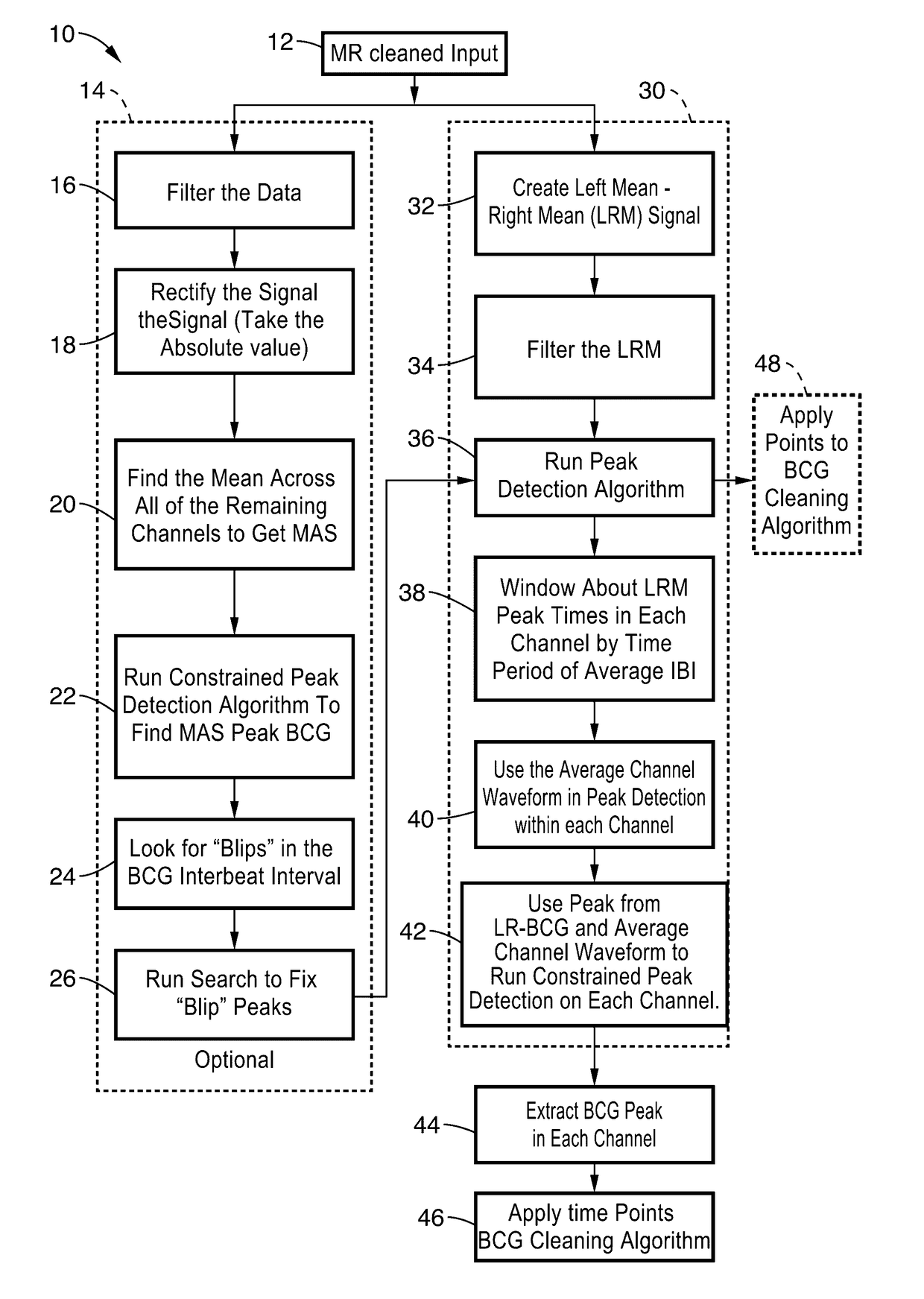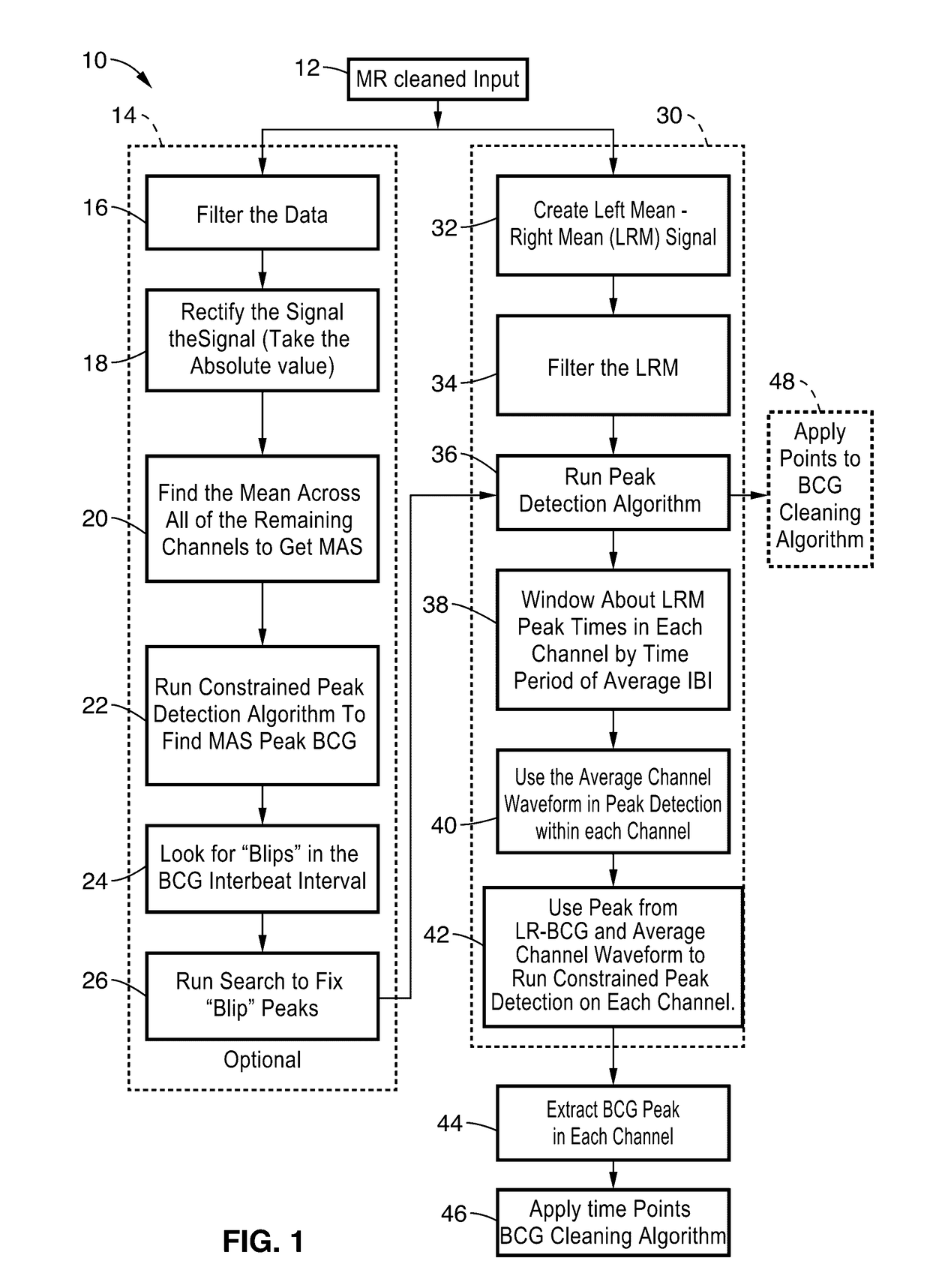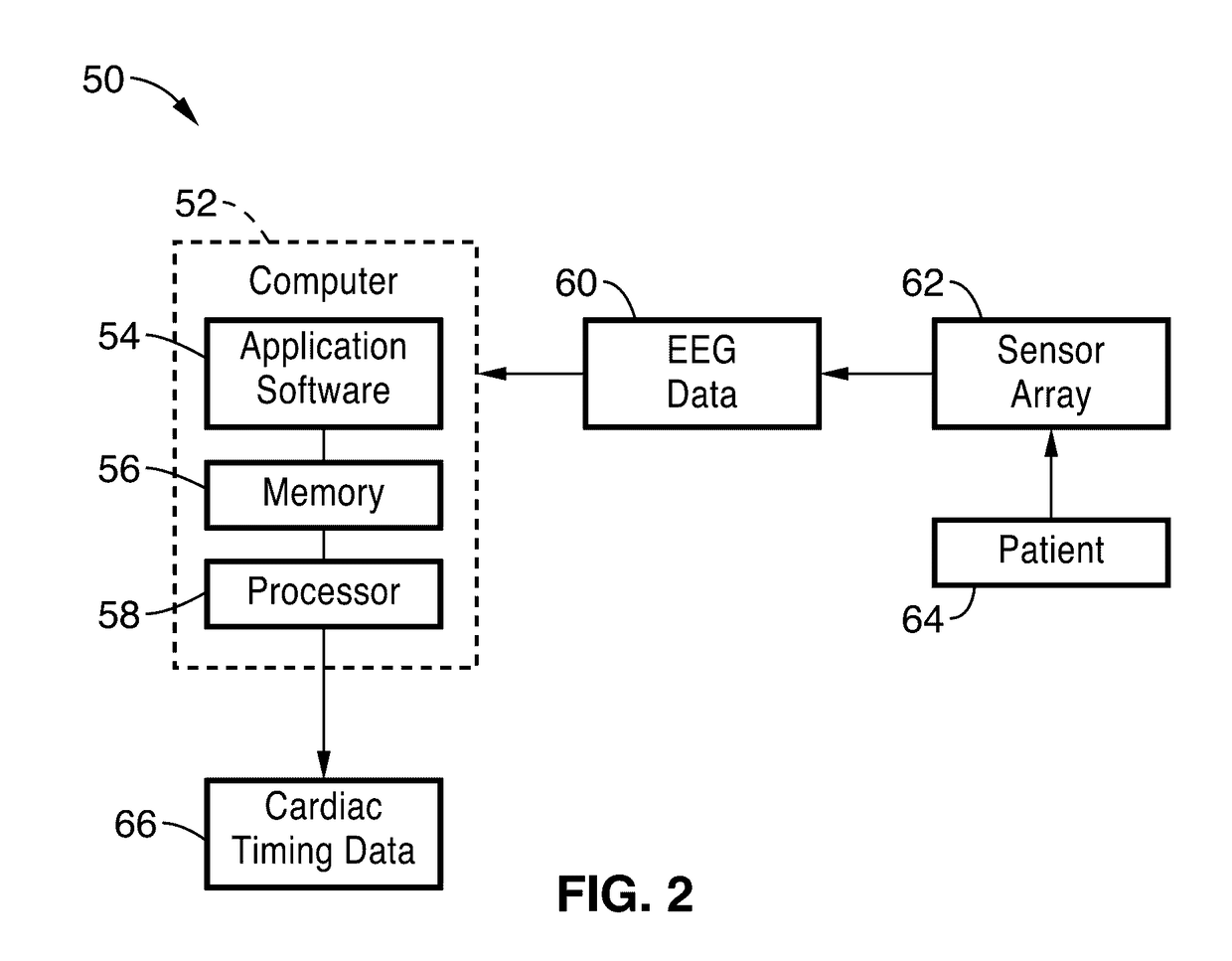Systems and methods for measuring cardiac timing from a ballistocardiogram
- Summary
- Abstract
- Description
- Claims
- Application Information
AI Technical Summary
Benefits of technology
Problems solved by technology
Method used
Image
Examples
Embodiment Construction
[0029]One realization of the present disclosure is based on the observation that second to the gradient artifact, the ballistocardiogram artifact (BCG) typically is the largest contaminant of electroencephalographic (EEG) recordings acquired within the Magnetic Resonance Imaging (MRI) environment. The strength of the BCG artifact contamination in a typical 3 Tesla MRI system is on the order of 10 times greater than the EEG signal itself. Making matters worse, this ratio scales with magnetic field strength.
[0030]The BCG artifact is believed to originate from three main sources: displacement of the electrodes from scalp movement, rotation and translations of the head from cardiac movements, and the Hall effect from the motion of the blood in the magnetic field. Each contamination source generates a voltage difference between the electrodes that contributes to the ballistocardiogram.
[0031]Existing algorithms that deal with this issue use a variety of means to estimate the waveform of t...
PUM
 Login to View More
Login to View More Abstract
Description
Claims
Application Information
 Login to View More
Login to View More - R&D
- Intellectual Property
- Life Sciences
- Materials
- Tech Scout
- Unparalleled Data Quality
- Higher Quality Content
- 60% Fewer Hallucinations
Browse by: Latest US Patents, China's latest patents, Technical Efficacy Thesaurus, Application Domain, Technology Topic, Popular Technical Reports.
© 2025 PatSnap. All rights reserved.Legal|Privacy policy|Modern Slavery Act Transparency Statement|Sitemap|About US| Contact US: help@patsnap.com



